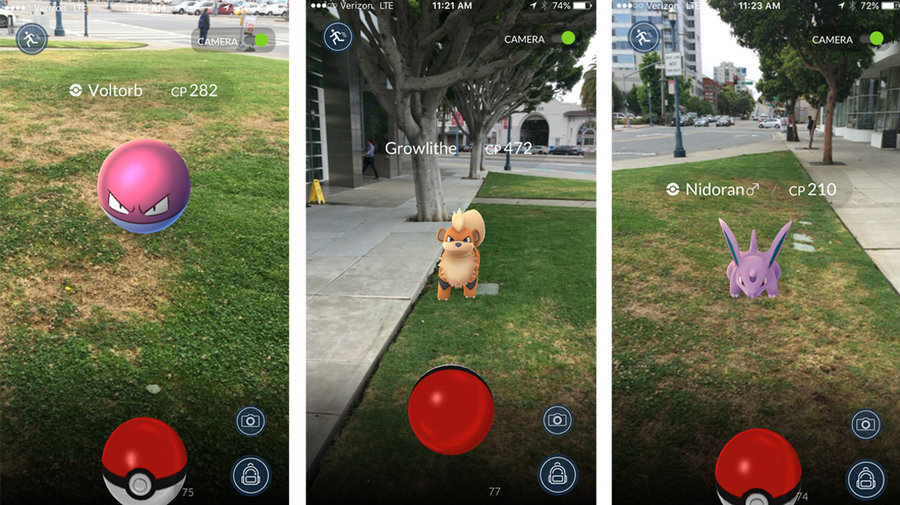It’s official – Pokemon Go is a massive hit and driving Augmented Reality and Geolocation adoption. In less than a week, Pokemon Go has:
- Reached the top of the iOS and Android app stores
- Is reportedly driving over $1.6 million dollars a day from the iTunes store alone
- Is about to surpass Twitter for number of active daily users
(Update 8/15/2016 – Latest Pokemon Go revenue figures, active user figures and examples of brands using Pokemon Go on a new blog post here.)
More importantly, news articles are heralding a new era of location-based gaming where people are actually going outside again and exercising more. So while Pokemon Go is the latest cultural phenomenon, what are the triggers creating this massive mobile hit?
The Pokemon Brand
Pokemon is a 20 year-old brand from Nintendo and has multi-generational appeal. Furthermore, the nature of Pokemon gameplay is perfectly suited for location-based activities in a mixed physical and virtual world. It really is lighting in a bottle with a perfect mix of brand gameplay + augmented reality + geolocation. You can read a primer on everything Pokemon Go related here.
Augmented Reality Integration
While the current hype (and investment) has been centered around Virtual Reality over Augmented Reality, it’s clear that Augmented Reality is playing a major role in Pokemon Go’s success. Augmented Reality and geolocation gaming has been around for over 8 years and Ogmento was one of the early pioneers in the mobile AR and location space. More recently, brands have been utilizing mobile AR and location for promotional efforts. The Hungry Jack’s Protect Your Whopper mobile AR game is one variation of interacting with virtual creatures in your physical environment from a mobile device.
Basic Augmented Reality Tech
Pokemon Go isn’t using any type of advanced Augmented Reality. The virtual objects are only displayed in your mobile viewfinder and object recognition and advanced geo positioning are not being used for more accurate placement of the Pokemon characters in your physical environment. However, it’s precisely this basic type of AR experience that people are engaging and interacting with. While devices like HoloLens show the future of Augmented Reality and more advanced functionality, simple AR experiences matched up with geolocation are introducing consumers to the potential of Augmented Reality.
Geolocation
Pokemon Go uses a brilliant placement of virtual objects in relation to your location. Similar to geolocation game Ingress (and created by the same company Niantic), virtual locations are often tied to physical locations that game players can interact with. Having the foundation of Ingress to work with, the Pokemon Go world is a similar yet more interactive experience given the element of capturing virtual ‘objects’ in physical locations. This creates a unique social effect where game players can often identify each other through proximity and interactive gameplay. This can have unintended results, however, such as one man’s physical house being virtually designated as a ‘gym’ with Pokemon players showing up at all hours of the night.
It’s Pokemon’s World…We’re Just Living In It
While wearables devices like HoloLens will comprise a large Augmented Reality segment in the future, we have often argued that mobile-based Augmented Reality coupled with geolocation will be an even bigger segment. With 3D cameras coming to the market now, not only can geolocation be used for virtual placement of objects in your physical environment, but 3D cameras will allow for real-time mapping of the physical environment for more stable positioning of the virtual objects. Once we arrive at that stage, this new virtual world (based on the physical) will become the largest virtual gold rush the world has ever seen.
JUL

